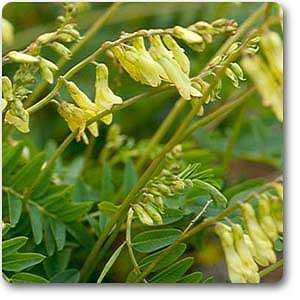Description
It is easy to grow plant with many medicinal uses and its appearance harmoniously decorate the landscapes.
It is a herbaceous perennial from the legume family. It has a short vertical or raised stem, densely covered with imparipinnate leaves.The inflorescence is a dense brush of yellowish flowers in the appearance reminiscent of peas, which after maturing turn into the oval or egg-shaped beans.
Plant Specifications
| Common Name | Astragale, Astragali, Astragalo, Milk Vetch, Mongolian Milk, Ogi, Radix Astragalus. |
| Maximum Reachable Height | 1-2 feet |
| Flower Colour | Green |
| Bloom Time | April and May |
| Difficulty Level | easy to grow |
Planting and care
Astragulus care
Astragalus can be propagated by seeds and division. It can be grown from seeds in spring or summer or when the temperature is warm. Although, seed germination rate is low.
| Sunlight | Full Sun to Partial Shade |
| Watering | If you, re growing astragalus in pots, it is important to keep the root ball of your plant moist, especially during the summer. |
| Soil | well-drained soil |
| Temperature | 65-70 |
| Fertilizer | Fertilizing with natural organic fertilizer is enough. Still, if the plant is not growing well use balanced slow-release fertilizer according to product instruction. |
| Harvest Season | Harvest the roots after the plant is three years old. |
Astragulus special feature
Astragalus is a plant within the Leguminosae (beans or legumes) family, with a very long history as an immune system booster and disease fighter.
Astragulus uses
Ornamental Use:
- The plant is used for ornamental purpose
Medicinal Use:
- Astragalus is an herb
- The root is used to make medicine
- Astragalus is used for the common cold, upper respiratory infections, allergies, fibromyalgia, anemia, HIV/AIDS, and to strengthen and regulate the immune system
- It is also used for chronic fatigue syndrome (CFS), kidney disease, diabetes, and high blood pressure



Comment